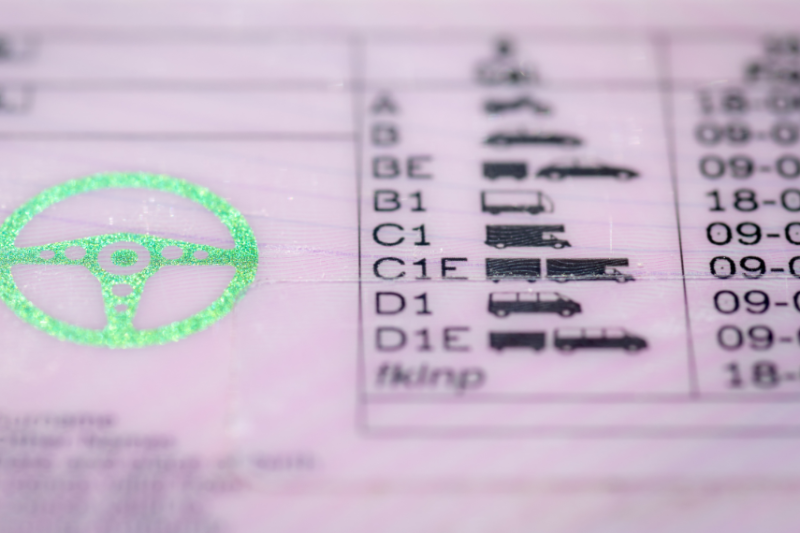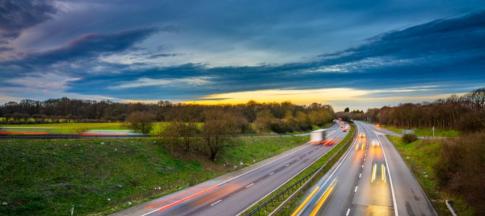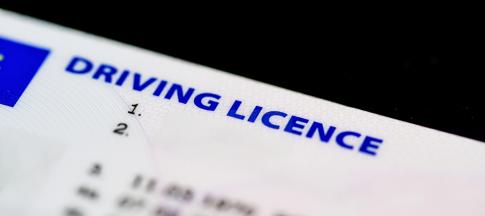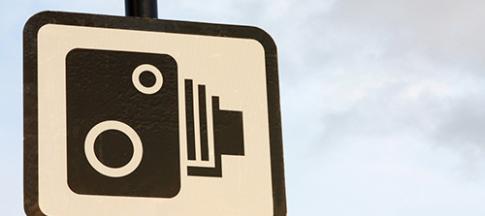
Ever wondered what the random letters and numbers mean on your driving licence?
These are driving licence codes and categories. They give an insight into what type of vehicle you can drive and more. To find out what yours mean, check out our in-depth guide to the different codes and categories below.
What are driving licence codes and categories?
Driving licence codes and categories are what tell you which vehicles you can drive with your current licence.
The codes and categories on your driving licence show what type of vehicles you can drive and if there are any rules you need to follow.
Driving licence codes – these are the letters, or combination of letters and numbers, for example, ‘B’ and ‘B1’. They represent what type of vehicles you can drive.
Driving licence categories – these are the numbers. They represent what you need to drive safely. For example, ‘01’ means you need to wear glasses or contact lenses when driving. Your driving licence must be up to date so you can drive legally in the UK.
How to find your driving licence codes and categories
They’ll be on the back of your driving licence in the last column. You’ll see a table with columns numbered nine to 12.
Here’s what they mean:
- Column 9: which vehicles you can drive
- Column 10: your licence start date
- Column 11: the date your licence expires
- Column 12: your licence categories and codes
What are the driving licence categories for cars?
You’ll see the term ‘MAM’ pop up a lot from here on. This means ‘maximum authorised mass’ and is the highest weight a vehicle or trailer can carry on the road – as stated by the manufacturer.
This includes the vehicle’s own weight and anything else added to it.
Category B
Category B represents what type of vehicles you can drive and what you can tow.
When you passed your driving test depends on what you can tow.
- If you passed before 1 January 1997 – you can tow a combination of a car and trailer up to a maximum authorised mass (MAM) of 8,250kg. You can also drive a minibus with a trailer over 750kg MAM.
- If you passed your test on or after 1 January 1997 – you can only drive vehicles up to 3,500kg MAM and with no more than 8 passenger seats. You can tow a trailer up to 750kg. You can also tow heavier trailers if the total MAM isn’t over 3,500kg.
If you’re over 21, you can drive motor tricycles with a power output that’s more than 15 kilowatts (kW).
Category B auto
This means you can drive any of the vehicles in Category B – but only with automatic transmission.
Category BE
You can drive a vehicle with a maximum authorised mass (MAM) of 3,500kg, and tow a trailer.
The size of the trailer you can tow depends on the ‘valid from’ date on your licence.
- Before 19 January 2013 – you can tow any size trailer, as long as it’s within the vehicle’s towing limits.
- On or after 19 January 2013 – you can tow a trailer with a MAM of up to 3,500kg within your vehicle’s towing limits.
Category B1
Category B1 lets you drive motor vehicles with four wheels that are:
- up to 400kg unladen weight
- up to 550kg unladen weight if the vehicle is for carrying goods
What are the driving licence categories for vans and lorries?
Category C1
C1 means you can drive vehicles between 3,500 and 7,500kg MAM. You can also tow a trailer of up to 750kg MAM.
Category C
This means you can drive vehicles over 3,500kg and tow a trailer up to 750kg MAM.
Category CE
You’re allowed to drive category C vehicles and tow a trailer over 750kg MAM.
Category C1E
This means you can drive C1 category vehicles and tow a trailer over 750kg.
The combined MAM of the vehicle and trailer can’t weigh more than 12,000kg.
What are the driving licence categories for motorbikes?
Category A
This means you can ride:
- motorbikes with a power output over 35kW or a power to weight ratio of 0.2kW/kg or more
- motor tricycles with a power output over 15kW
You can also drive motorbikes in categories A1 and A2.
Category A1
A1 means you can ride lightweight motorbikes with:
- an engine size up to 125cc
- a power output of up to 11kW
- a power to weight ratio of no more than 0.1kW/kg
This category also includes motor tricycles with a power output up to 15kW.
Category A2
This lets you ride motorbikes with:
- a power output up to 35kW
- a power to weight ratio of no more than 0.2kW/kg
If it’s a customised motorbike, you can’t ride it if used to be more powerful than it is now. You can also drive motorbikes in category A1.
Category AM
You can ride two or three-wheel mopeds with a maximum speed of 28mph.
You can also ride light quad bikes that weigh less than 350kg. This doesn’t include the battery if it’s an electric quad bike.
Category p
This means you can drive two-wheeled vehicles with:
- a maximum design speed between 28mph and 31 mph
- tan engine size of 50cc or less
Category q
This means you can ride two and three-wheeled vehicles without pedals if:
- its engine size is 50cc or less
- its maximum design speed is 15.5mph or less
What are the driving licence categories for a bus?
Category D
This category means you can drive any bus with more than eight passenger seats and tow a trailer up to 750kg MAM.
Category D1
This means you can drive vehicles:
- with up to 16 passenger seats
- up to eight metres long
- with a trailer up to 750kg MAM
Category D1E
With this category, you can drive D1 vehicles with a trailer over 750kg MAM.
The combined MAM of the vehicle and trailer can’t be more than 12,000kg.
Category DE
This means you can drive D vehicles with a trailer over 750kg MAM.
Other licence categories
Other licence categories you might come across are:
- f – agricultural tractor
- G – road roller
- H – tracked vehicles
- k – mowing machine or pedestrian-controlled vehicle
- l – electrically propelled vehicle
- M – trolley vehicle
- n – exempt from duty
Need more?
You can find more information about different licence categories on the DVLA website.
If you have a licence that was issued outside the UK, check out our guide to driving with a foreign licence.


